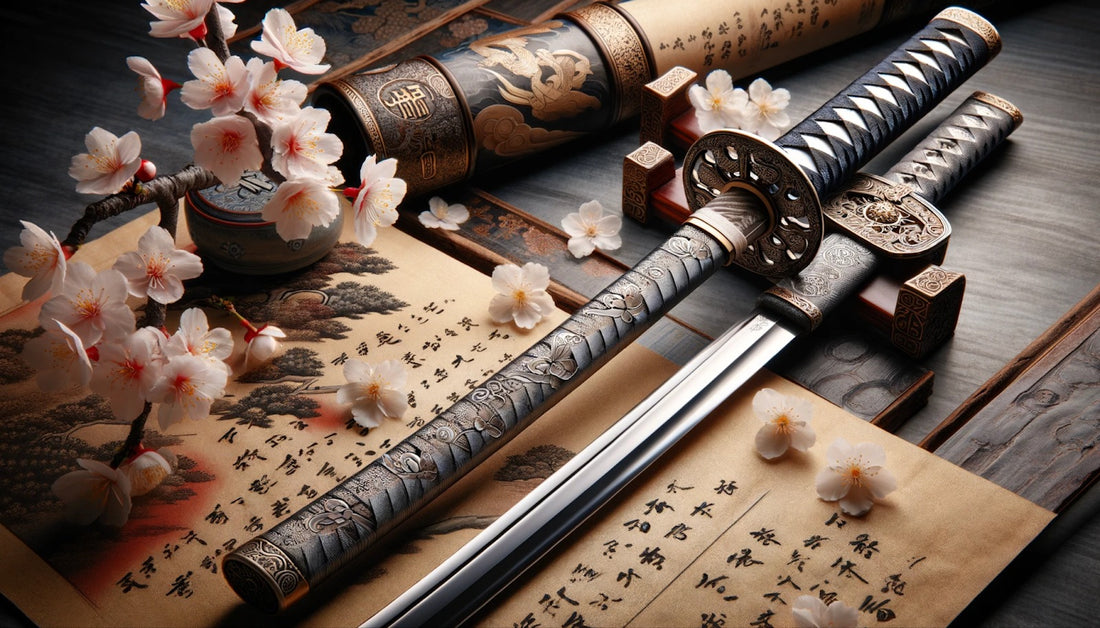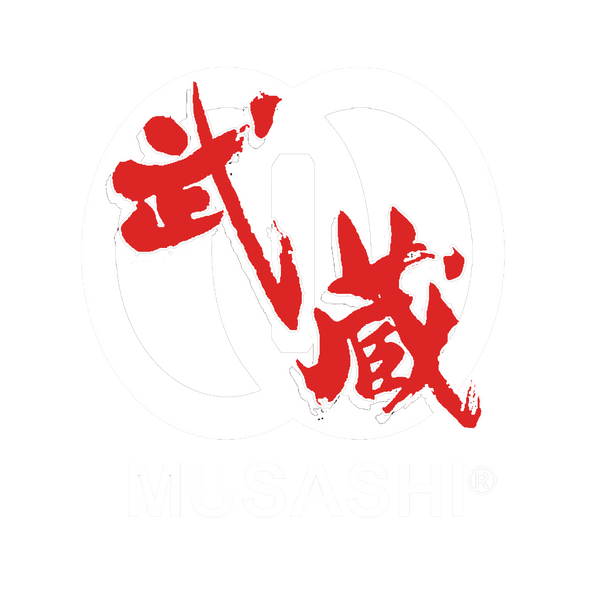
With its sleek curvature and razor-sharp edge, the katana has long stood as a symbol of the samurai spirit, embodying the essence of beauty and lethality. These swords, born from the fires of feudal Japan, have carved their place in history and the hearts of modern collectors, martial artists, and cultural enthusiasts worldwide.
The allure of the katana stretches far beyond its homeland, capturing imaginations with tales of heroism, honor, and craftsmanship that borders on the divine.
As we delve into 2024, the katana continues to be more than just a relic of the past; it is a living tradition, evolving while retaining its storied heritage. This guide aims to unfold the layers of mystique that enshroud the katana, offering a detailed exploration of the various current types.
From historical blades that whispered death in the hands of a samurai to modern interpretations that blend age-old techniques with contemporary artistry, each katana has a story to tell.
Whether you're drawn to the elegance of these swords, their historical significance, or their practical application in martial arts, this journey through the world of katanas promises to enrich your understanding and appreciation of these iconic weapons.

Anatomy of a Katana
At first glance, a katana might seem like a simple weapon: a curved blade designed for cutting. However, a closer examination reveals a complex amalgamation of art, science, and spirituality. Each part of the katana, from tip to hilt, is crafted meticulously, serving both functional and aesthetic purposes.
Blade: The heart of the katana lies in its blade, a masterpiece of metallurgy. Crafted from different types of steel, the blade's signature curve is not merely for elegance; it provides the sword with its unparalleled cutting capability. The length and curvature are tailored to ensure optimal balance and striking power, making each katana unique to its wielder and purpose.
Handle (Tsuka): The handle is more than just a means to wield the blade; it is a nexus of functionality and beauty. Wrapped in rayskin and overlaid with woven silk or cotton, the tsuka offers a secure grip while showcasing intricate craftsmanship. Ornamental menuki are tucked beneath the wrapping, offering both decoration and additional grip, blending form with function in true Japanese fashion.
Guard (Tsuba): The tsuba is not merely a functional piece designed to protect the hand from enemy blades but also a canvas for artistic expression. From simple, elegant designs to elaborate scenes that tell stories of their own, the tsuba reflects the personality of its owner and the artistic vision of its creator.
Scabbard (Saya): Protecting the blade when not used, the saya is as much a part of the katana's soul as the steel itself. Crafted from carefully selected wood and lacquered to a fine finish, the saya complements the sword's aesthetic, often decorated to match the sword's fittings and theme.
Each component of the katana, from the deadly beauty of its blade to the detailed artistry of its fittings, combines to create a weapon that is both deadly and beautiful. The katana is not just a tool of war but a work of art, embodying the samurai's spirit and Japan's cultural heritage.
Types of Katanas
The world of katanas is as diverse as it is fascinating, with each type offering a glimpse into the era, craftsmanship, and purpose it was designed for. From the battlefield-ready Tachi to the modern-day Shinken, the variety is vast. Let's explore some of the most significant types of katanas you might come across in 2024.
Tachi
The Tachi predates the more commonly known katana and was primarily used by cavalry units during the late Kamakura period. Characterized by a longer, more deeply curved blade, the Tachi was designed to combat from horseback, effectively allowing for powerful downward strikes. When worn, it was suspended with the cutting edge down, a distinction from the later katana. The elegance of the Tachi, combined with its historical significance, makes it a prized possession for collectors.

Uchigatana
The Uchigatana emerged as a response to the evolving tactics on the battlefield, where the need for a sword that could be quickly drawn and used for close combat became paramount. With a shorter blade than the Tachi and worn with the cutting edge up, the Uchigatana allowed for faster draw and strike movements. This adaptability made it the preferred choice among samurai and foot soldiers, marking a significant shift in Japanese swordsmanship.

Wakizashi
The Wakizashi is not just a shorter sword but part of the Daisho, the samurai's traditional pairing of two swords. With a blade length typically between 30 and 60 cm, the Wakizashi was a companion sword to the longer katana, used for fighting in confined spaces where a longer blade would be impractical. It also had a symbolic and practical role, as it was worn at all times and used for seppuku, the ritual suicide of a samurai.

Shinken
Shinken translates to "real sword" in the modern context; it refers to katanas that are made for actual use rather than decoration. These swords are crafted following traditional techniques but are intended for contemporary martial artists practicing Iaido, Kenjutsu, or Tameshigiri (test cutting). A true Shinken is a work of art, embodying the swordsmith's skill in creating a beautiful and functional blade.

Iaito
The Iaito is a training sword designed for practitioners of Iaido, the art of drawing and cutting with a sword. Unlike the Shinken, the Iaito is not made to be sharp, as the Iaido focuses on the precision and beauty of movement rather than cutting ability. The balance and weight of an Iaito mimic those of a real katana, providing practitioners with a realistic training tool that minimizes the risk of injury.

Custom Katanas
In recent years, there has been a surge in the popularity of custom katanas tailored to the specific preferences of the buyer. These can range from traditionally made swords adhering strictly to historical specifications to modern interpretations incorporating various artistic and functional enhancements. Custom katanas allow personal expression, blending the ancient art of sword making with individual tastes and needs.
Craftsmanship and Features
The allure of the katana lies in its effectiveness as a weapon and in the artistry and craftsmanship involved in its creation. Traditional Japanese sword making is a highly revered craft, passed down through generations of swordsmiths, each dedicated to perfecting this ancient art.
Traditional Forging Techniques
Creating a katana is a labor-intensive process that demands a deep understanding of metallurgy. The core of this art lies in the folding and forging of high-carbon steel. This involves repeatedly heating, hammering, and folding the metal to eliminate impurities and create a layered structure.
Several types of high-carbon steel are traditionally used, including Tamahagane, a unique steel produced from iron sand. This technique results in a blade that's both hard and flexible, capable of retaining a sharp edge while resisting breakage.
The distinctive pattern (Hamon) seen on the blade's edge results from the differential hardening process. This involves applying clay to the blade before quenching in water.
Modern Manufacturing Methods
While traditional techniques are still highly prized, modern manufacturing methods have also found their place in katana creation. Advances in metallurgy and precision engineering allow for producing high-quality blades at a fraction of the time and cost.
These methods cater to a broader audience, from martial artists looking for durable practice swords to enthusiasts seeking affordable replicas. However, even with modern techniques, the best katanas balance the use of technology with the principles of traditional craftsmanship.

Distinctive Features
A katana is much more than its blade. The Tsuba (guard), Tsuka (handle), and Saya (scabbard) are all critical components, each offering an opportunity for artistic expression. The Tsuba, in particular, serves as a canvas for intricate designs, ranging from simple geometric patterns to elaborate scenes.
The Tsuka is wrapped in a specific pattern using silk or rayon cord, providing a secure grip while adding to the sword's aesthetic. Often lacquered and decorated, the Saya protects the blade and completes the katana's presentation.
The types of katanas and the craftsmanship involved in their creation reflect a rich tradition that has evolved over the centuries. Whether for martial arts practice, collection, or simply as a piece of art, each katana has a story to tell, a piece of history crafted into its very form.
Selecting a Katana
Choosing the right katana is a deeply personal journey that intertwines practicality with passion. Whether your interest lies in martial arts, historical collection, or aesthetic appreciation, understanding the purpose behind your acquisition will guide your selection process.
Purpose and Practicality: Begin by defining the purpose of your katana. Martial artists might seek a Shinken, a live blade honed for cutting practice, embodying danger and discipline. On the other hand, collectors might gravitate towards historically significant pieces, such as Tachi swords, which offer a glimpse into the samurai era.
For those fascinated by the craft, custom katanas present an opportunity to own a piece that's not unique but also a testament to the swordsmith's artistry.
Quality Indicators: The quality of a katana is evident in its craftsmanship. Traditional Japanese forging techniques, such as folding the steel, create a resilient blade capable of holding a keen edge. Pay attention to the Hamon, the visual effect on the blade's edge that indicates the differential hardening process. A clear, distinct hamon is often a sign of superior craftsmanship. The balance of the sword, the fit and finish of the handle (tsuka), and the guard (tsuba) are also crucial quality indicators.
Care and Maintenance: Owning a katana comes with the responsibility of maintenance. A well-crafted katana requires regular care to preserve its beauty and functionality. This includes oiling the blade to prevent rust, ensuring the silk or cotton wrapping on the handle remains tight and in good condition, and storing the sword properly to avoid moisture damage. Investing in a katana is investing in a piece of history and craftsmanship, necessitating a commitment to its upkeep.
With its sleek curve and sharp edge, the katana is more than just a weapon; it symbolizes the samurai spirit, embodying the virtues of honor, precision, and beauty. As we've explored the different types of katanas available in 2024, it's clear that each sword tells its own story, crafted by the hands of skilled artisans who keep the ancient traditions alive.
Whether you're drawn to the practical applications of the katana in martial arts, the historical significance of these exquisite blades, or their artistic beauty, there's a katana out there that resonates with your spirit. The journey of selecting a katana is as much about finding a connection to the past as it is about choosing a companion for the future.
As we conclude this comprehensive guide, let it be a starting point for your exploration into the world of katanas. The enduring legacy of these swords is a testament to their impact on culture, art, and history. May your journey be filled with discovery, respect for the craftsmanship, and a deeper appreciation for the art of the katana.
Discover the artistry of Musashi Swords, offering an exquisite range of authentic Katanas for Sale. Browse our curated collection now!


